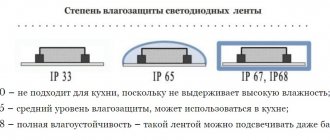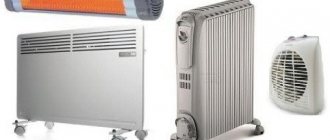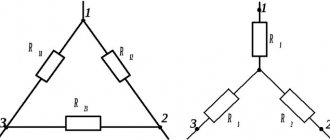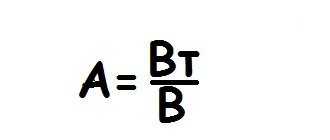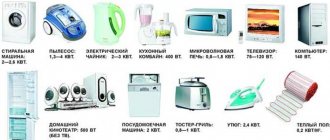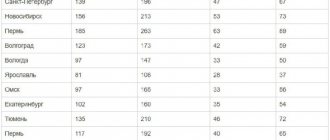Our modern society cannot imagine its life without electricity. It is firmly rooted in the daily and industrial life of a person in the twenty-first century.
Electricity is used not only to illuminate streets, residential buildings and other premises. Today, electricity is needed to power the telephone, computer, TV and many other household appliances in our homes, which make the life of a modern person much easier.
Many home owners use electricity for heating, although this is not the cheapest type of heating, it is quite reliable and easy to use.
Like people in the past, modern society cannot exist without electricity. Every year, scientists are developing new technologies that require power. Of course, today electric current is used more widely than before. But after several decades, its consumption will increase several times. So, for example, if 10 years ago 1.5 - 2 kW of electricity was enough for a house or apartment, today this figure has increased to 15 kW, almost 10 times.
Let's try to figure out how many kilowatts a home currently needs.
Electricity consumers in the house
Decree of the Government of the Russian Federation No. 334 “On improving the procedure for technical connection of consumers to electrical networks” dated April 21, 2009 states that a private individual can connect up to 15 kW to his home. Based on this figure, we will make a calculation to determine how many kilowatts will be enough for our home. To carry out the calculation, you need to know how much electricity each electrical appliance in the house consumes.
Power table of household electrical appliances
The power table for household electrical appliances shows approximate electricity consumption figures. Energy consumption depends on the power of the devices and the frequency of their use.
| Electrical appliance | Power consumption, W |
| Appliances | |
| Electric kettle | 900-2200 |
| Coffee machine | 1000-1200 |
| Toaster | 700-1500 |
| Dishwasher | 1800–2750 |
| Electric stove | 1900–4500 |
| Microwave | 800–1200 |
| Electric meat grinder | 700–1500 |
| Fridge | 300–800 |
| Radio | 20–50 |
| TV | 70–350 |
| Music Center | 200–500 |
| Computer | 300–600 |
| Oven | 1100–2500 |
| Electric lamp | 10–150 |
| Iron | 700–1700 |
| Air purifier | 50–300 |
| Heaters | 1000–2500 |
| Vacuum cleaner | 500–2100 |
| Boiler | 1100–2000 |
| Instantaneous water heater | 4000–6500 |
| Hairdryer | 500–2100 |
| Washing machine | 1800–2700 |
| Air conditioner | 1400–3100 |
| Fan | 20–200 |
| Power tools | |
| Drill | 500–1800 |
| Hammer | 700–2200 |
| Circular saw | 700–1900 |
| Electric planer | 500– 900 |
| Electric jigsaw | 350– 750 |
| Grinding machine | 900–2200 |
| A circular saw | 850–1600 |
Let's do a little calculation based on the data from the table of power consumption of household electrical appliances. For example, in our house there will be a minimum set of electrical appliances: lighting (150 W), refrigerator (500 W), microwave (1000 W), washing machine (2000 W), TV (200 W), computer (500 W), iron (1200 W), vacuum cleaner (1200 W), dishwasher (2000 W). In total, these devices will consume 8750 W, and given the fact that these devices will almost never be turned on at once, the resulting power can be divided in half.
Selection of the “Calm” voltage stabilizer model for home protection
So, having data on the allocated power, you can easily select a suitable voltage stabilizer model to protect the entire electrical system in the house.
When choosing a stabilizer model for centralized connection of electrical appliances, you need to pay attention to its technical capabilities. For example, it is important that the device has terminal blocks through which it can be easily connected to the mains.
The design should also be taken into account. If the stabilizer will be installed next to the electrical panel, then it must be able to be wall mounted. The noise level is important when installing the device in a residential area.
Selection according to the nominal value of the introductory machine
Stabilizer for single-phase network
For example, a 220 V network with a permissible output power of 5.5 kW is installed in a house with a 25 A input circuit breaker installed. In this case, wall-mounted IS7000 voltage stabilizer models with an output power of 7000 VA / 5000 W or IS1106RT for floor or rack installation are ideal with output power 6 kVA / 5.4 kW.
Stabilizer for three-phase network
Another example. A three-phase network of 380 V for 15 kW was installed in a private house. In this case, each phase accounts for 5 kW. Accordingly, three 25 A single-phase circuit breakers are installed in the electrical panel. In this case, there are several options to protect the entire electrical system of the house.
| Option | Description |
| 1) Installation of a single-phase stabilizer on each supply phase | If the house has only single-phase consumers, then the most convenient and functional option for providing protection would be to install one voltage stabilizer for each phase. For our case, the above IS7000 stabilizers for 7 kVA/5 kW or IS7000RT for 7 kVA/5.5 kW are also suitable. |
| 2) Installing a voltage stabilizer with a 3:1 configuration | Another option for providing centralized home protection from unstable mains voltage is to connect a voltage stabilizer that has a special configuration (three-phase input and single-phase output). The device can be installed immediately after a three-phase input circuit breaker. The line of models from the Shtil Group of voltage stabilizers with a 3:1 configuration includes the IS3120RT model with a power of 20 kVA/16 kW, which will provide reliable connection and protection of a single-phase load to a three-phase network with uniform loading of all supply phases, which eliminates the possibility of network imbalance and eliminates from the need for constant interphase balancing. It is important to note that the power of connected devices may be greater than the power of an individual phase. |
| 3) Connecting a three-phase voltage stabilizer | If there are three-phase consumers in the house, three-phase models of voltage stabilizers that operate on a 380 V network will be required. In the line of inverter stabilizers of the InStab series from the Shtil Group, the IS3320RT model with a power of 20 kVA/16 kW is presented, which will ensure protection of the entire volume as a three-phase , and single-phase electrical equipment in the house. |
How many kilowatts do you need to heat a house?
The main consumers of electric current in homes are lighting, cooking, heating and hot water.
During the cold season, it is important to pay attention to the heating of the house. Electric heating in a house can be of several types:
- water (batteries and boiler);
- purely electric (convector, heated floor);
- combined (warm floor, radiators and boiler).
Let's look at electric heating options and energy consumption.
- Heating using a boiler. If you plan to install an electric boiler, then the choice should fall on a three-phase boiler. The boiler system equally divides the electrical load into phases. Manufacturers produce boilers with different capacities. To choose the right one, you can make a simplified calculation by dividing the area of the house by 10. For example, if the house has an area of 120 m2, then for heating you will need a 12 kW boiler. To save on electricity, you need to install a two-tariff mode for using electricity. Then at night the boiler will operate at an economical rate. Also, in addition to the electric boiler, you need to install a buffer tank, which will accumulate warm water at night and distribute it to heating devices during the day.
- Convector heating. As a rule, convectors are installed under windows and connected directly to an outlet. Their number should correspond to the presence of windows in the room. Experts recommend calculating the total amount for the power consumption of all heating devices and equally distributing it across all three phases. For example, the heating of one floor can be connected to the first one. To another phase, the entire second floor. To the third phase, add a kitchen and a bathroom. Today, convectors have improved functions. This way you can set the desired temperature and choose the heating time. To save money, you can set the time and date of operation of the convector. The device has a “multi-tariff” option, which turns on the heater at the required power or at a reduced rate (after 23-00 and before 8-00). Energy calculations for convectors are similar to the boiler in the previous paragraph.
- Heating using underfloor heating. A very convenient heating option, as you can set the desired temperature for each room. It is not recommended to install heated floors in the place where furniture, refrigerators, and bathrooms are installed. Calculations show that a house of 90 m2 with an installed convector and heated floor on one floor consumes from 5.5 to 9 kW of electricity.
Cost of electricity in the kitchen
If you don't have gas, you'll have to cook with electricity. Modern electric stoves are highly efficient, but they also consume 5 to 7 kilowatts of electricity per hour at full power.
A modern kitchen, even with a powerful stove, does not consume much electricity.
The approximate cost of cooking with electricity will be from 300 to 500 rubles per month, regardless of the size of your home.
How to save energy?
Today there are many options for saving energy. These methods are not at all complicated, but for them to work you need to use them every day. Reducing energy consumption will not only save the family budget, but will also reduce emissions into the environment.
Simple and time-tested saving methods
- Use of energy-saving light bulbs. Such lamps practically do not heat up, so electricity is spent only on lighting. On average, the service life of such lamps is up to 3 years, and this will significantly save costs. Such lamps consume 5 times less electricity, their service life is 10 times longer and pay for themselves in 1 year.
- When using household appliances, it is important to follow the instructions. Let's take the refrigerator for example. It cannot be placed near a stove or radiator, as the device will need to work uninterruptedly to maintain the required temperature. The same applies to the moment when hot food is placed. It is important not to forget to defrost the refrigerator in a timely manner, since ice in the freezer contributes to high energy costs (up to 20%).
- When leaving the room, do not forget to turn off the lights. This advice is the most effective way to save energy.
- Clean light bulbs regularly. At first glance, such advice seems ridiculous. But few people know that dust can block up to 15% of the light. It is important not to forget about the cleanliness of the lampshades. You can use lower wattage lamps.
- Make some minor cosmetic repairs to the room. When choosing wallpaper, you should pay attention to light shades, as they can make the room 80% brighter and more comfortable. We should not forget about the ceiling; it should be made white. This way you will turn on the lights less often.
- Application of heat-reflecting screens. They are made from foil or foam foam. They should be installed behind the battery. Thanks to such screens, the temperature in the room can be raised by several degrees.
- Insulation of the room. It is necessary to insulate the windows or replace them with metal-plastic ones. Up to 30% of heat can be lost through windows. You should hang thick curtains on the windows. If possible, you need to insulate the entrance doors, as well as the walls, ceilings, floors and roofs of the house.
- Purchasing household appliances of class “A”, “A+” and “A++” can save up to 50% of electricity.
- It is not recommended to leave devices in “standby” mode. A person uses any technology for only a few hours during the day. The rest of the time it is in “standby” mode and gradually absorbs electricity. To save money, devices should be turned off from the network.
And so, we already know how many kilowatts are needed for a home. Let's summarize. From what was described above, it follows that if we use electricity sparingly, then we can easily invest in 15 kW, and for a small house this is even enough for heating. Then the whole family will feel comfortable in their cozy nest.
Dedicated power and input machine
In accordance with the value of the allocated power, a corresponding input circuit breaker (or circuit breaker) is installed in the electrical panel, where the external power cable of the electrical network is supplied, which is located immediately after the electric meter.
The device is a box with a switch designed to protect the entire electrical wiring of the house from overload and short circuit currents, as well as a general disconnection of its power supply from the external line. As a rule, after the introductory circuit breaker, additional circuit breakers are installed for various types of loads.
Input circuit breakers can be single-pole, two-pole (used in single-phase electrical networks) and three-pole (used in a three-phase network and allow each phase to be disconnected). For example, with an authorized power of 5.5 kW, a 25 A input circuit breaker (C25) will be installed in the electrical panel. On the Internet you can easily find tables that indicate the permitted power of each circuit breaker model.
